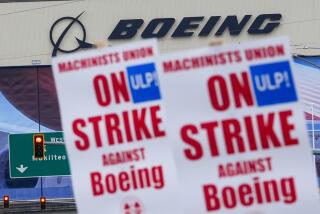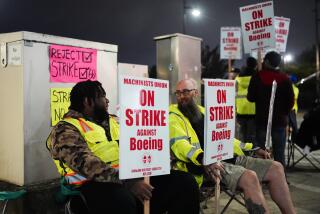Latest woes for Boeing’s grounded 737 Max: Predatory falcons and pigeon corpses
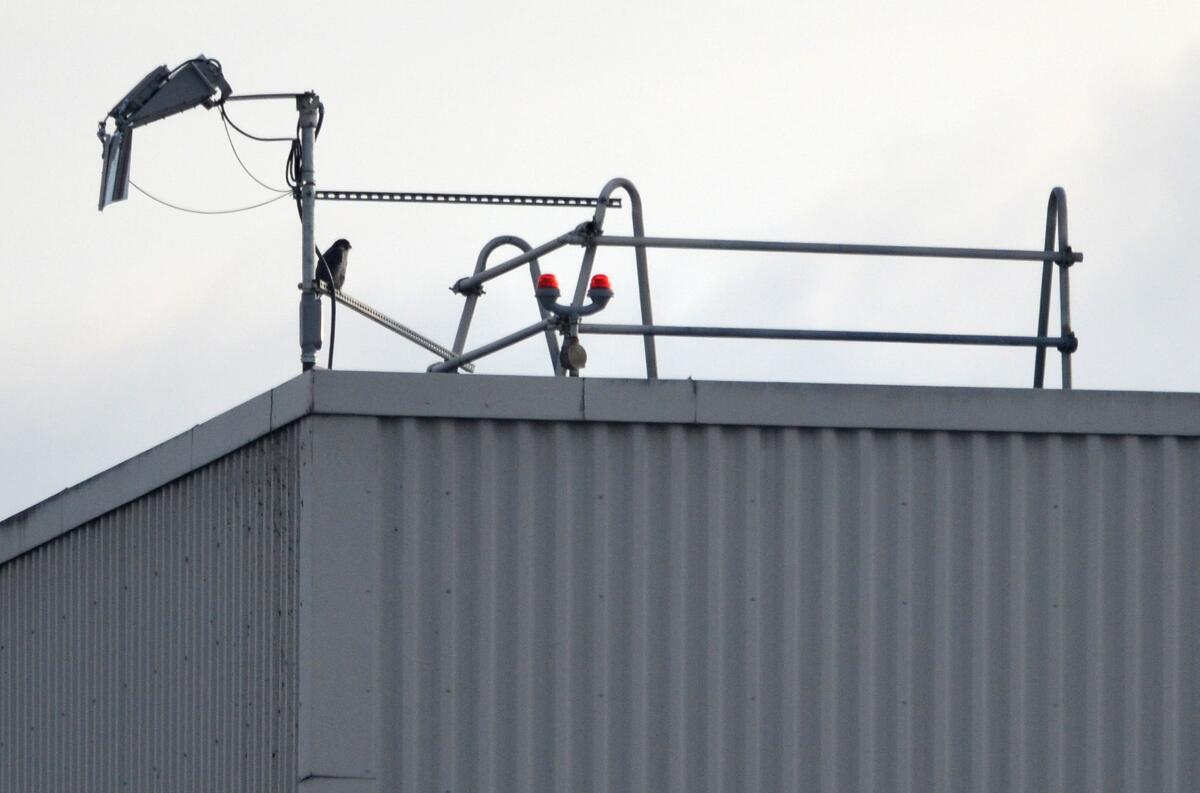
- Share via
RENTON, Wash. — The recent travails of Boeing are well known: the grounding of its best-selling 737 Max following two crashes that killed 346 people, the firing of its chief executive, the billions of dollars in losses.
Less known is the company’s struggle against the birds.
For at least three years, a pair of peregrine falcons — the fastest creatures on the planet — have been nesting in the rafters of the 737 factory outside Seattle.
Of all the possible perches in the picturesque Northwest, why would they choose the Boeing plant?
Because they obviously know good real estate when they see it. The building, which occupies an area the size of 19 football fields, offers heat in winter, air conditioning in summer, and an ample supply of food consisting of pigeons, starlings and other menu options that happen to flutter in.
Workers say the falcons perk up every time a bell rings announcing the massive doors are about to open.
And therein lies a problem. The falcons are messy eaters. After they dive-bomb their prey, severed heads, wings and feet plop onto the factory floor and a lunch area, soon followed by stray feathers.
An independent contractor cleans up the remains as well as bird droppings, which Boeing regards as health hazards.
The falcons — a male and a female — also take a talons-off approach to parenting. Last June, three of their fledglings fell several stories while learning to fly and had to be rushed to a wildlife rehab center, where they were fed, pampered and eventually adopted by falconers.
Boeing managers decided it was time to do something.
They called in Ed Deal, president of Seattle’s Urban Raptor Conservancy, who in 27 years of working with peregrines had never encountered any nesting indoors.
He made his first visit to the factory in October to observe the birds. “I saw one chasing a crow through the rafters,” he recalled.
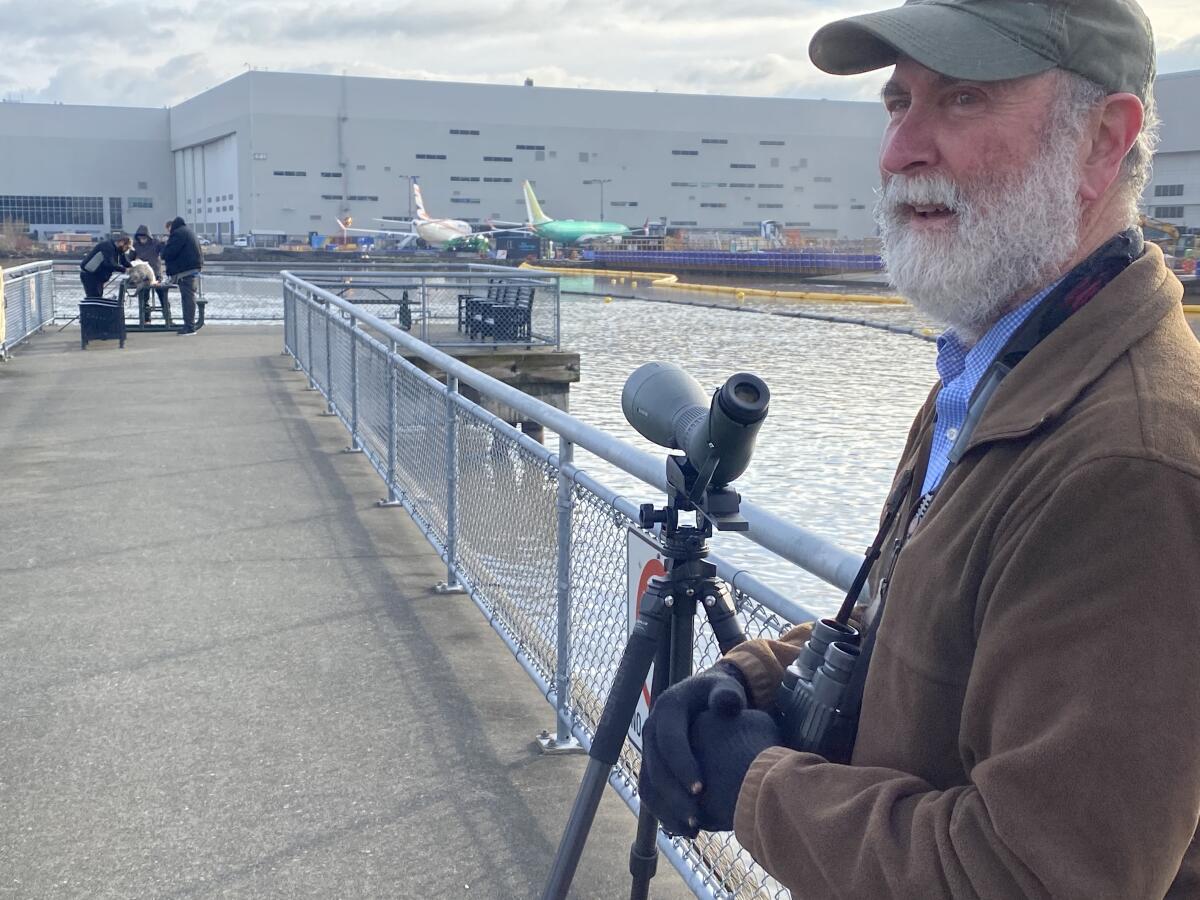
At the time, the worldwide ban on commercial flights of the 737 Max had been in place for half a year, but Boeing was still cranking out 47 new planes a month and parking them in outlying areas.
Deal recommended blocking off the falcons’ quarters and placing two nesting boxes — which his organization could build for $300 each — on the building’s roof. His hope was that when the birds left to stretch their wings outside, they might encounter the rooftop penthouses and decide to relocate.
“If we could get the peregrines to nest outside the building,” he said, “that would eliminate their kids getting into trouble.”
Deal laid out his plans in a Nov. 19 conference call with company officials and another falcon expert. The invitees on Boeing’s calendar notification also included “raptors,” though their attendance was listed as optional.
He said there was a decent chance that after the pair’s annual courtship rituals, the female would lay her eggs in one of the boxes this spring, thereby locking in the move.
But when Deal delivered the boxes in mid-December, he was surprised to learn that Boeing had also called in trappers from the U.S. Department of Agriculture. He left the boxes without installing them.
On Jan. 10, just after Boeing finally stopped 737 production, Deal returned to the plant, where he saw a USDA employee placing a trap.
Patti Loesche, who is vice president of the raptor conservancy and accompanied Deal, wrote in her notes that a Boeing employee showed her a “site of massive cleanup of prey detritus.”
Deal saw the factory shutdown as a golden opportunity to close the doors behind the peregrines. But the company was not on board with that plan.
C.J. Nothum, a Boeing spokeswoman, said that although the doors tended to be closed more often in winter, they could not be kept shut because workers needed access for limited factory operation.
Other than to say Boeing isn’t giving up, she declined to reveal much more about the falcon situation, or to authorize release of a falcon photograph taken by an employee.
Boeing has manufactured 737s since the 1960s at the Renton, Wash., plant, still touted as the world’s most efficient airplane factory. The Max is the plane’s latest iteration, certified in 2017.
It has larger, more fuel-efficient engines mounted farther forward than on earlier models, pushing its nose upward during flight. Flight-stabilization software intended to curb that tendency is blamed for the crashes.
The peregrine falcon, in contrast, is a flying machine perfected by evolution over millenniums, with a diving speed clocked at 242 mph.
“The peregrine is adapted to the pursuit and killing of birds in flight,” wrote J.A. Baker in “The Peregrine,” a classic 1967 book on the bird. “No flesh-eating creature is more efficient.”
When he penned those lines, the falcons were in mysterious decline, their near-extinction subsequently traced to DDT. Peregrines have rebounded since the U.S. banned the insecticide in 1972, reaching an estimated population of 23,000, but the federal government still classifies them as a protected species.
The U.S. Fish and Wildlife Service closely supervises trapping and handling of falcons under the Migratory Bird Treaty Act.
Last week, a month after the USDA first set traps, Tanya Espinosa, a spokeswoman for the agency, said that “unfortunately we were unable to trap the falcons using the normal methods.”
The plan now, she said, is for the USDA to remove the indoor nest and any replacements they try to build in the factory.
Raptor experts believe that Boeing chose the wrong outfit for the peregrine project.
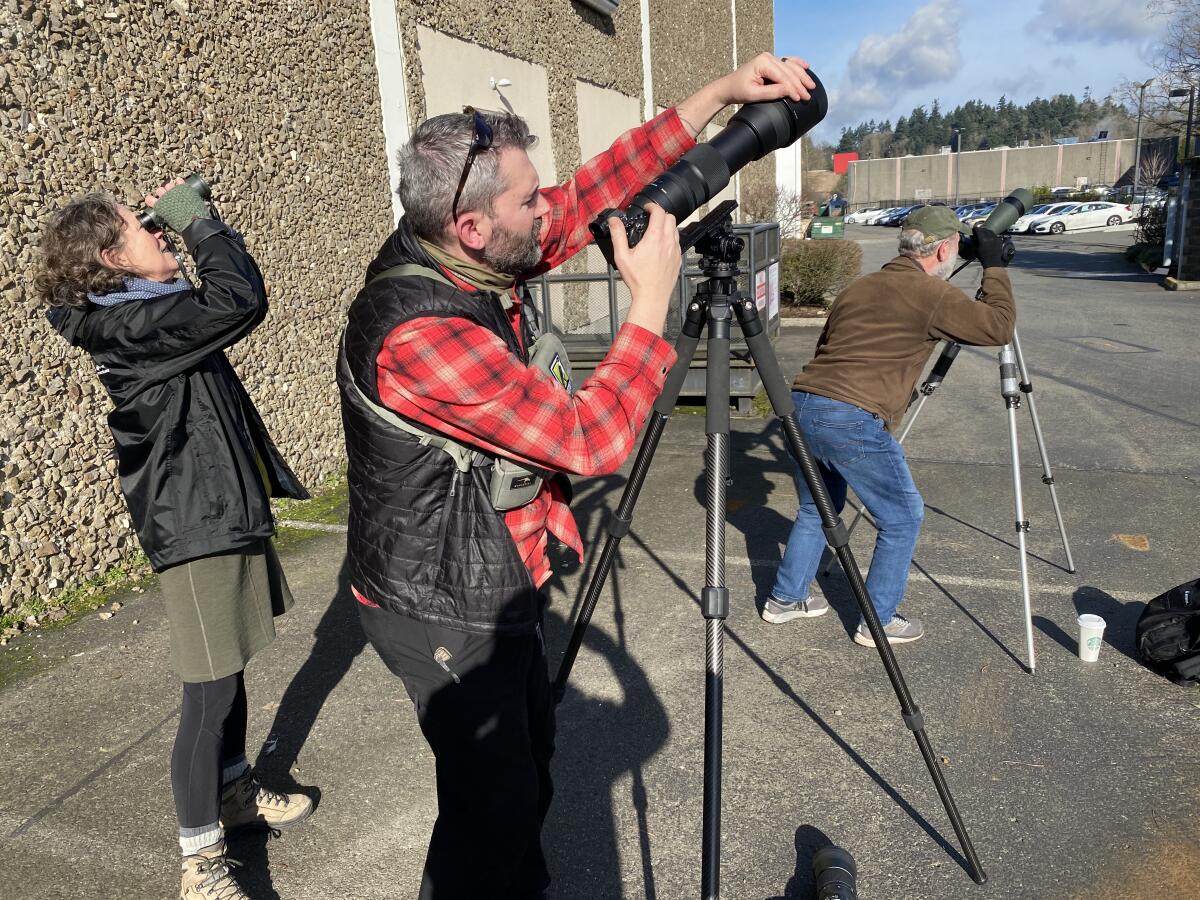
“USDA doesn’t have the experience or the permits that allow them to use certain types of traps that you would use for peregrine falcons,” said Jeff Kidd, vice president of Kidd Biological Inc., who routinely traps raptors hanging around Southern California aerospace buildings.
Kidd uses great horned owls as decoys. “Peregrines hate owls, so they come down and get caught in a matter of seconds.”
Bud Anderson, a raptor expert north of Seattle who removes peregrines and other birds from sites including Seattle-Tacoma International Airport, criticized the idea of trapping the falcons without closing the factory doors.
“We strongly suspect that they would come right back,” he said, noting that peregrines become attached to nests, known as scrapes, and can return even after being moved hundreds of miles.
He was also skeptical of Deal’s plan. “I disagree that nesting boxes are going to work on the roof of that building,” Anderson said. “Peregrines usually don’t nest on big, flat, open areas.”
Deal said he hadn’t heard from Boeing since delivering the nesting boxes. “It’s unfortunate,” he said.
His nonprofit has yet to be paid for them, and based on his recent assessment from an upper floor of a nearby hotel, they have not been placed on the factory roof.
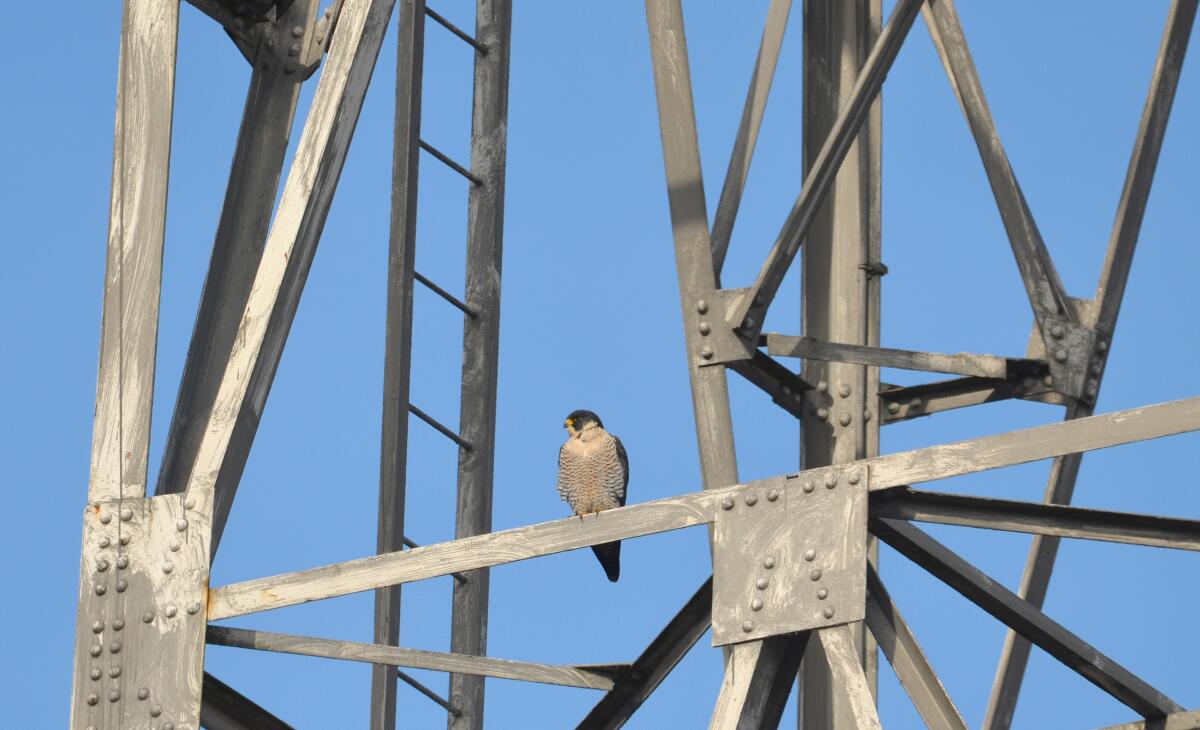
Earlier this month, Deal erected a tripod on a public dock outside the plant and pointed a high-powered scope at a corner of the roof. A male peregrine, almost certainly the one inhabiting the factory, appeared in the viewfinder, perched on a railing support.
“I don’t care about the money,” he said. “I just want the birds to be OK.”
Executives at Boeing, whose engineers are working to fix the flight-control software, hope the 737 Max will be allowed to return to the skies this summer.
Production would then resume, meaning that the plant doors could not be kept closed. If the falcons can evade capture until then, they may be in the factory to stay.
More to Read
Sign up for Essential California
The most important California stories and recommendations in your inbox every morning.
You may occasionally receive promotional content from the Los Angeles Times.

